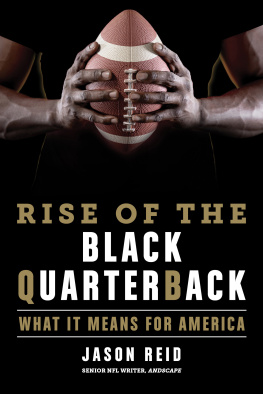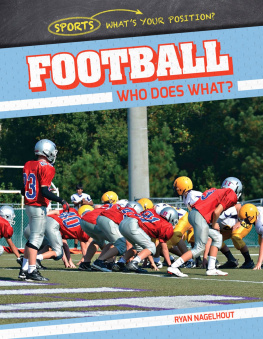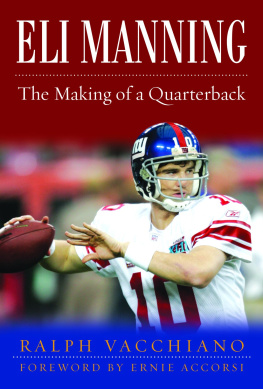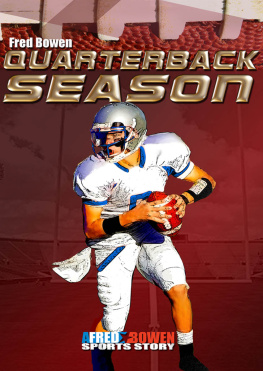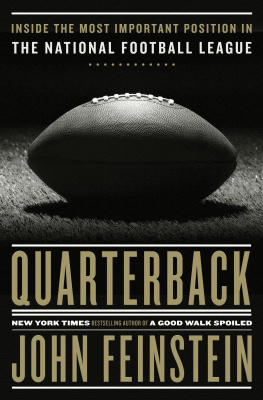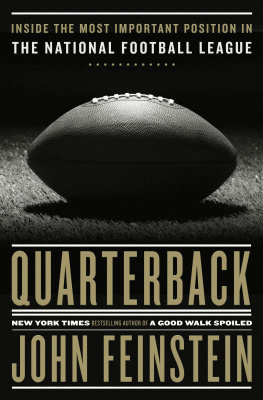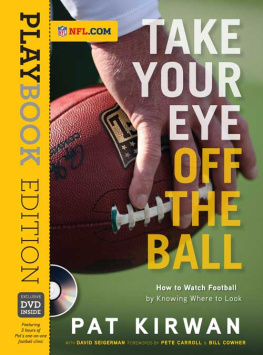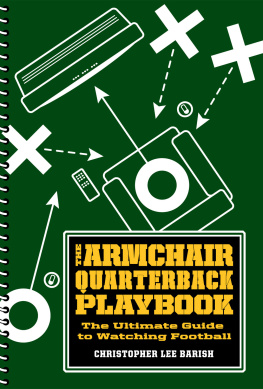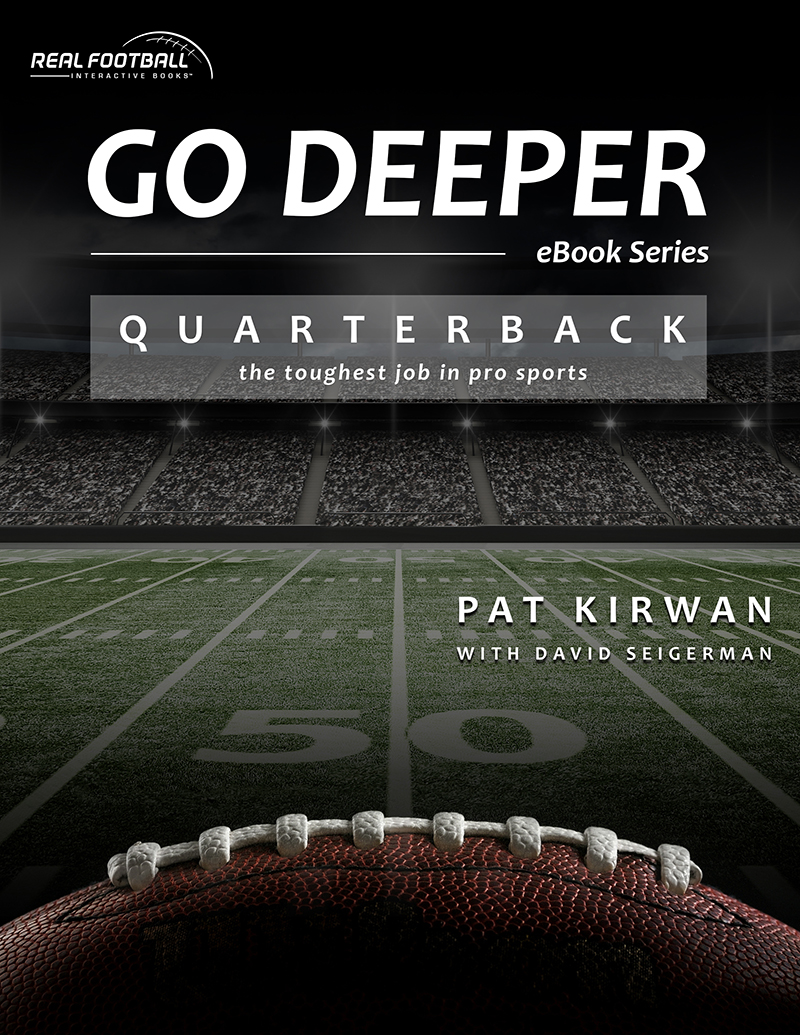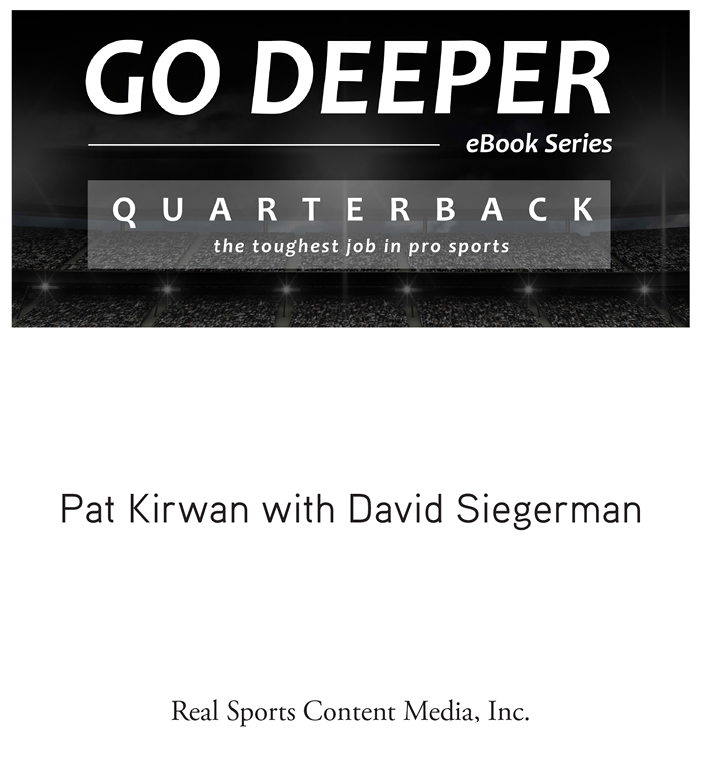
Table Of Contents
Has the quarterback position reached an evolutionary crossroads?
What you should look for in a quarterback
Learn to look at the field through a quarterbacks eyes
How pass plays are drawn up to beat specific coverages
A quarterback must master skills most fans never notice
Offenses always evolve to maximize a quarterbacks matchups
Quarterbacks need to be at their best in the games biggest moments
Does your team have a reserve QB ready to get the call?
Introduction
Where have you gone, Norm Van Brocklin?
On September 28, 1951, the Los Angeles Rams backup quarterback passed for an unthinkable 554 yards. Van Brocklin was 25 years old that historic Sunday, three years younger than the Los Angeles Coliseum, which hosted the game. The NFLs single-game passing record was set so long ago, it predates Bobby Thomsons Shot Heard Round the World by five days. It happened 10 years before Dan Marino was born. The fact that the leagues most prolific passing performance came against the New York Yanks tells you all you need to know about how long that record has stood.
For the next 59 seasons, no NFL quarterback had a better day than the Dutchmans best day. By the end of the 2010 season, only nine quarterbacks had even broken the 500-yard barrier, none coming closer to Van Brocklins mark than Warren Moon, who came within 27 yards of tying his fellow Hall of Famers record in December 1990.
Then came 2011.
Tom Brady opened the season with a 517-yard outing in Week 1. Matthew Stafford closed it by throwing for 520 yards in Week 17. Van Brocklins record survived its 60 th birthday and beyond, but the message was loud and clear the Dutchmans days in the top spot are numbered.
The 2011 season saw an epidemic extinction of individual and team passing records. Six quarterbacks set new single-season standards for their respective teams. Andy Dalton enjoyed one of the five-best seasons ever compiled by a rookie quarterback 3,398 yards and 20 touchdowns and yet he wasnt even the best quarterback in the rookie class. Dalton was surpassed in both categories by Cam Newton, who threw for a rookie-record 4,051 yards as well as 21 TDs (third-most by a rookie)... and that doesnt even account for the 700+ yards and 14 touchdowns Newton rushed for, a trailblazing development well discuss in greater detail in Chapter 1.
Three quarterbacks threw 40 or more touchdown passes; only five had done that before. Prior to 2011, Marino and Drew Brees were the only quarterbacks in NFL history ever to pass for 5,000 yards in a season; three guys (Brady, Stafford and Brees) did it in 2011 alone, and two more joined the club in 2012 (Eli Manning, Matt Schaub). Yes, that Matt Schaub .
In that watershed season of 2011, Brees set new NFL marks for yards (5,476), completions (468), completion percentage (71.2) and 300-yard games (13). And that somehow wasnt enough for him to warrant the Most Valuable Player award.
That honor was bestowed upon Aaron Rodgers, who rewrote the Green Bay record book with 4,643 yards, 45 TDs, eight 300-yard games and a passer rating of 122.5. In 15 games. Amazingly, in the one game Rodgers didnt play, Matt Flynn a backup, just like Van Brocklin actually put up the best single-game numbers in Packers history (480 passing yards, 6 TDs).
Without question, the practice of passing the football reached unprecedented heights in 2011 and that was without Peyton Manning taking a snap. Thirty-two NFL teams threw for a combined 117,601 yards a 12% increase from just five seasons before. Pass plays accounted for 66.2% of total offense. These were high-water marks to date, meaning the passing game had never figured more prominently.
But even those prolific passing numbers have been surpassed. The NFL didnt have a 5,000-yard passer in 2014, but 11 guys threw for 4,000. Six quarterbacks attempted 600 or more passes; it would have become a record-seven had Oakland rookie Derek Carr made just one more throw. In 2014, NFL teams threw for 120,947 yards 68% of total offense across the league.
Passing games continue their pursuit of the unprecedented, and stats sheets look more like Powerball payouts... but is that a good thing?
No question, its exciting for the fans. Theres a bigger appetite out there for the deep pass than for three yards and a cloud of dust. A 50-year-old fan may not fully endorse what hes seeing in todays game, but you ask a 20-year-old who grew up playing Madden games and hes gaga over whats going on. Its like technology; the younger generations embrace it and the world moves forward.
But where is this all headed? Prior to the start of 2012 training camp Vic Ketchman, a writer for Packers.com, speculated that wed soon see a quarterback put up a 6,000-yard season, once the football equivalent of landing a spaceship on Mars. That no one dismissed his prediction as unreasonable or even unlikely is a sign of how far the passing game has grown.
All those eye-popping statistics are evidence of a trend a pronounced expansion of the passing game. They dont explain how teams are throwing the ball more, with more success, than ever before. Or how the quarterbacks role has evolved and his responsibilities escalated in the process. They simply state, undeniably, that we live in an increasingly pass-first world.
In the pages that follow, were going to examine what it takes to play quarterback in todays NFL.
This book is not a history lesson. Its not a retrospective of great moments from prolific passers past or an anthology of the legends and legacies associated with the men who have played footballs highest-profile position.
Rather, its a deep dive into the most demanding job description that exists in sports today. Its an extension of the study we began in our first book, Take Your Eye Off The Ball: How to Watch Football By Knowing Where to Look (Triumph Books, 2010), and the newly released expanded version, Take Your Eye Off The Ball 2.0 (Triumph Books, 2015), a continuation of the conversations weve been having on Movin the Chains , our show on Sirius XM NFL Radio, for more than a decade.
For years, weve been committed to helping football fans make sense of what theyre seeing on the field. We want them to recognize and appreciate the chess match between coaches that develops on every play of every game, and understand the ever-evolving ebb-and-flow between the fundamental opposing philosophies of offense and defense. Fans want to learn to speak the language of the NFL, and we are here to help build their football fluency.
Not everyone around the league has wanted to allow fans entry into professional footballs inner sanctum. Theyve always encouraged the passion but are only now beginning to embrace the hunger for pure football knowledge. This is why the NFL finally decided to make available the All-22s the game films that show every player on every play, the same video coaches and players and scouts use in film study every day. The league heard the demand and now provides fans access to watch the game in ways they were never before able.
Having access to the All-22s, of course, is one thing. Making sense of them is another.
Which is why we are launching this Go Deeper digital series of Real Football Interactive Books. Each installment will focus on a particular position or aspect of the game. One book, for instance, will take a long look at the running game, another might deal exclusively with the ongoing battle between pressuring and protecting the passer.



